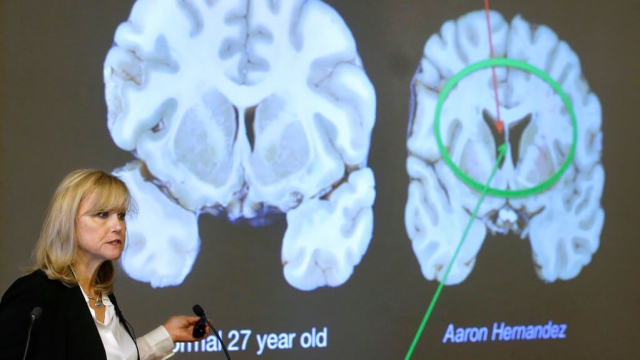Doctors and advanced researchers have long thought that the number of concussions suffered by athletes increased their likelihood of being diagnosed with the degenerative brain disease chronic traumatic encephalopathy, or CTE, a disease only officially diagnosed after death.
The brain disease has been discovered in the brains of more than 370 former NFL players, including some of the game’s greats.
But a new Harvard study says concussions are not the biggest factor when it comes to developing CTE; instead, it can occur with repeated hits to the head, whether concussive or not.
"The problem is, when we're talking about CTE risk with the NFL players, their exposure didn't all happen at the NFL level," said Dr. Dan Daneshvar. "Their exposure happened throughout their entire lives in the decade or more before they ended up participating in the NFL."
Dr. Daneshvar is an assistant professor at Harvard Medical School and the lead author of the study.
He says the majority of forceful head hits—suffered by football players—aren't even happening during the game.
"Over two-thirds of head impacts for a football player occur in practice typically," said Daneshvar. "And so, if we eliminate half of the head impacts that occur in practices based on just eliminating those practices, no change to the game at all, we could decrease the risk of CTE for an average, say, offensive lineman by about 50% over eight years."
The study used 20 years of data from football helmet sensors. Estimating the cumulative impact of hits on more than 600 former football players who donated their brains to Boston University.
SEE MORE: NFL quarterbacks get redesigned helmets to lessen concussions
The research found that linemen were more prone to developing CTE than players at any other position.
Despite experiencing fewer forceful hits, both offensive and defensive linemen experienced the most total g-force impact each season due to the sheer number of hits they endured.
"We also know from helmet sensor studies that for every concussion that a football player gets, they get upwards of 334 head impacts that are of stronger intensity of more force than a head impact that results in a concussion," said Daneshvar.
"You have concerns because you know how violent the sport is," said Doug Chapman, a former NFL Running Back.
Chapman knows the perils that come with playing the sport.
He was a standout running back at Marshall University and played five years in the NFL.
"I played the game from Little League through high school, college, and into the NFL, you know, playing the same position," said Chapman. "Players may only remember that one hit, but they forget the 47 hits that led up to that concussion."
Chapman says he only remembers parts of one of the biggest hits he took during his career.
"I remember the guy that hit me, and I remember where we were, and I remember the aftermath," said Chapman. "And the reason why I remember this is because it was my college and pro teammate Randy Moss standing over top of me with his hand out, and he's like, man, you straight, you straight? and I had no idea where I was. I had no idea how I got there. I just remember looking down at my jersey, and it was just covered in blood in the front."
SEE MORE: Rest may no longer be the best medicine for treating concussions
Chapman, now the director of player development for Marshall University’s football team, says safety is a top priority for him as he watches his student athletes.
"And plus, a lot of our staff has not just been around a lot of football; you know, we've played football; we have four members of our staff that play in the NFL," said Chapman. "And so, you know, when you have that many eyes that have seen so much of the game, you know, we're very proactive with watching our guys when they take big shots."
The goal now, Dr. Daneshvar says, is to reduce the number of hits and their impacts.
New, advanced technology helps with that effort.
More professional and college football players are wearing the Q-collar, the first and only FDA-approved neck device that protects the brain during repetitive head blows.
The NFL is also recommending the expanded use of a soft-shell helmet cover to increase the protection of players during practices and off-season training.
For youth football leagues, including Pop Warner, many coaches have eliminated tackling during practices.
Chapman says leagues across all sports need to do a better job protecting athletes.
"You know, if you look at any football player—they can take any football player, wrestler, rugby player, hockey, you know—and they look at their brains once they've passed, I'm pretty sure I feel strongly that 75% or more are gonna show signs of CTE," said Chapman. "The sports themselves, that make so much money off of the brand, need to protect those players that helped build its brand."
Trending stories at Scrippsnews.com




